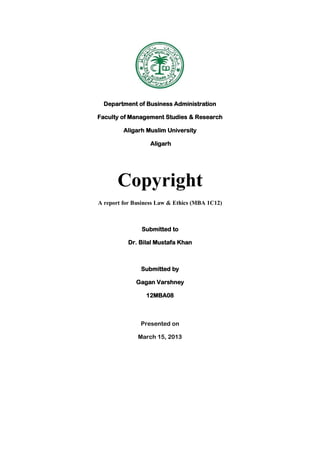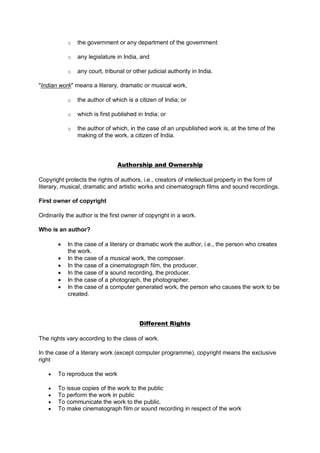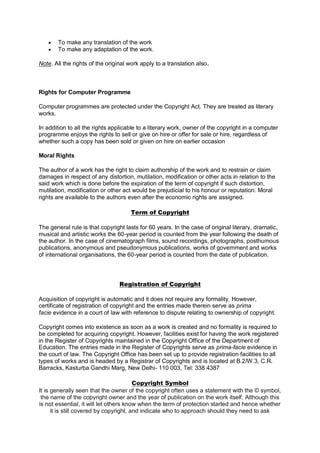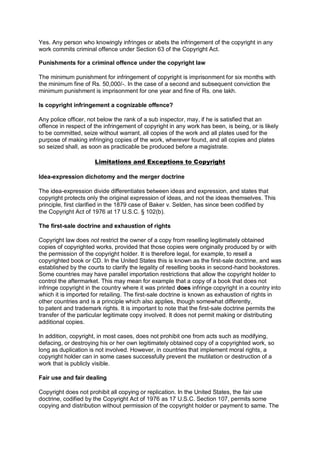This document provides an overview of copyright law in India. It defines copyright and outlines the types of works protected, including literary works, musical works, artistic works, films, and sound recordings. It describes authorship and ownership, the various rights afforded to copyright holders (reproduction, distribution, public performance, etc.), and exceptions like fair use. It also covers the term of copyright, registration and enforcement, including civil and criminal penalties for infringement.







